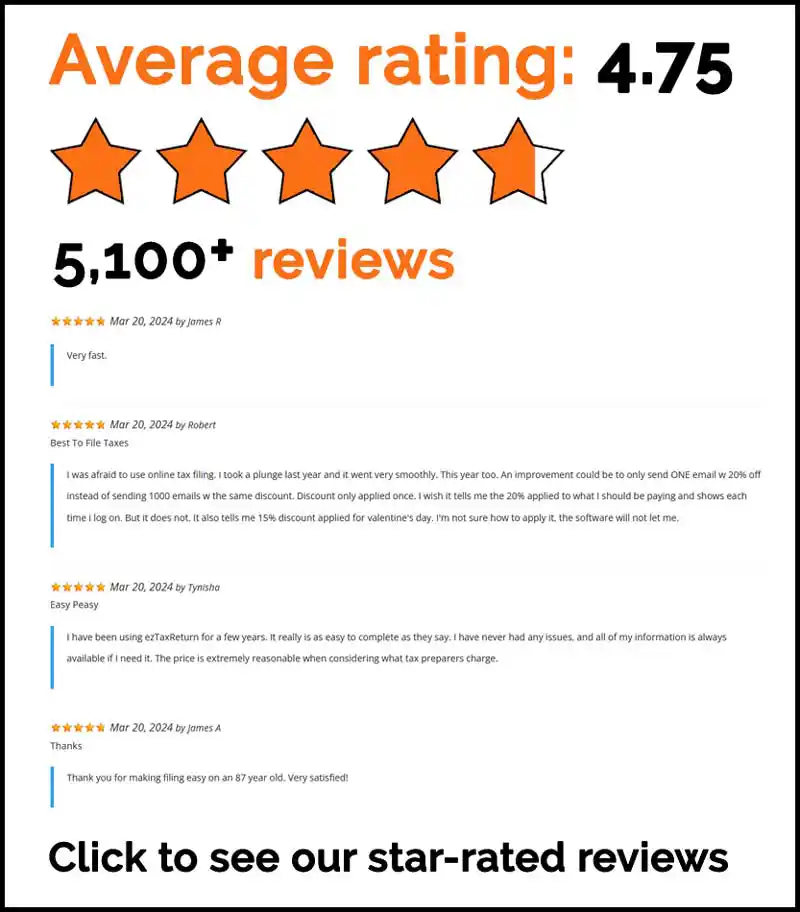The information in this article is up to date for tax year 2024 (returns filed in 2025).
Making mistakes on your tax return can delay the IRS processing, cause a refund delay, or even result in a painful audit. Fortunately, avoiding common tax errors is simple if you know what to look for. Here’s a list of nine common filing errors to avoid when you file a tax return:
9 Common Tax Filing Errors
1. Missing or inaccurate Social Security numbers (SSN)
One of the most common tax filing errors is entering a wrong or missing SSN. Be sure each SSN is entered exactly as printed on the Social Security card. Any discrepancies could delay processing and your tax refund.
2. Misspelled names or name changes
Ensure all names listed on your tax return match exactly what’s on their Social Security cards. If there has been a recent name change, make sure to update it with the Social Security Administration and correct any W-2 or 1099 forms with your employer or client.
Note: The spelling of your name on your tax return will be used on any refund check the IRS issues you.
3. Filing status errors
Choosing the right filing status is important because it affects whether you’re required to file a tax return, your standard deduction amount, what credits you can claim, and how much tax you owe. There are five filing statuses to choose from:
- Single
- Married filing jointly
- Married filing separately
- Head of household
- Qualifying widow or widower with a dependent child
However, it isn’t always clear which filing status best applies to your situation. For instance, some people claim the wrong filing status, such as Head of Household instead of Single. Use the Interactive Tax Assistant on IRS.gov to check what filing status is right for you. Or, e-file through ezTaxReturn, which walks you through the process to ensure you choose the correct status with the biggest possible refund.
4. Miscalculations
Math errors are often caused by manual calculations. These errors can lead to rejected returns or adjustments, especially with complex items like pension, IRA distributions, or Social Security benefits. To avoid this, e-file your tax return through online tax services like ezTaxReturn, which automatically performs calculations and ensures accuracy.
5. Errors in figuring tax credits or deductions
Missteps in calculating credits like the Earned Income Tax Credit (EITC) or Child Tax Credit can lead to serious issues, including audits or delayed refunds. Use tax preparation software to help identify all credits you’re eligible for, so you don’t miss out on valuable deductions.
6. Incorrect bank account numbers
Ensure that your bank account and routing numbers are correct if you’re opting for direct deposit of your refund. Incorrect details may delay your refund, as it could end up in someone else’s account. Using the IRS “Where’s My Refund?” tool can help you track the status of your refund.
7. Forms not signed
A tax return without a signature is invalid. Both spouses must sign a joint return. If you e-file your tax return, the process requires an electronic signature, which is automatically handled by the tax software.
ezTaxReturn makes filing your taxes fast, easy, and pain-free. With free customer support and step-by-step guidance, ezTaxReturn walks you through the filing process and prompts you if you miss anything.
8. Electronic filing PIN errors
When e-filing, you will sign and validate your tax return electronically with a prior-year Self-Select Personal Identification Number. If you do not have or know your PIN, enter the Adjusted Gross Income from last year’s tax return.
Keep a copy of your tax return. Taxpayers using a software product for the first time may need their Adjusted Gross Income (AGI) amount from their prior-year tax return to verify their identity. Learn more about how to verify your identity and electronically sign tax returns at Validating Your Electronically Filed Tax Return. Do not use the AGI amount from an amended return or a return that the IRS corrected.
9. Filing with an expired ITIN
If your Individual Taxpayer Identification Number (ITIN) is expired, your tax return may still be accepted, but without exemptions or credits. You’ll need to renew your ITIN to ensure any claims for exemptions and credits are processed correctly and you receive your tax refund. ITIN expiration and renewal information is available on IRS.gov.
Common Filing Errors Checklist
- Missing or inaccurate SSNs
- Misspelled names or name changes.
- Wrong filing status.
- Miscalculations.
- Tax credit or deduction errors.
- Incorrect bank account numbers.
- Forms without signature.
- E-filing PIN errors.
- Expired ITIN.
E-file your tax return for maximum accuracy
E-filing is the safest, quickest, and most accurate way to file a tax return. If you’re filing a simple return, ezTaxReturn offers free federal tax filing and guides you step-by-step through the process to avoid common tax errors. Maximize your refund and minimize errors by e-filing today.
The articles and content published on this blog are provided for informational purposes only. The information presented is not intended to be, and should not be taken as, legal, financial, or professional advice. Readers are advised to seek appropriate professional guidance and conduct their own due diligence before making any decisions based on the information provided.




